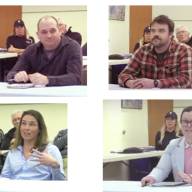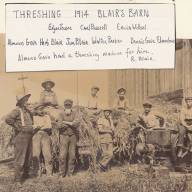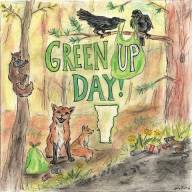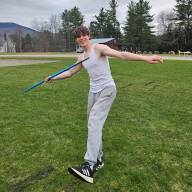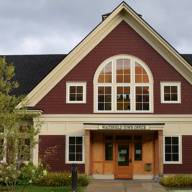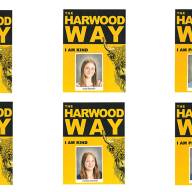The Green Mountain Photo Show, held at the Red Barn Galleries at Lareau Farm and Forest in Waitsfield, will wrap up on October 8. The show exhibits work by over 60 artists from across Vermont and a handful of other New England states.
What started as a three-day event 33 years ago is now a month-long exhibition put on by Mad River Valley Arts. This year’s show, which is curated by Pam Lerner and Julie Parker, has generated $1,405 in photograph sales. Artists can take home $843 of that.
Some artists in the show have been photographers for decades, like Ron Caplain of Fall Rivers, Massachusetts, who said, “I don’t sleep. I’m up all night thinking about what I’m going to photograph next.” Others photograph their surroundings more as a hobby, with some starting or revisiting photography after a recent retirement or during the COVID-19 pandemic.
Fisher Misenko, a Duxbury photographer and 14-year-old student at Crossett Brook Middle School, said that during the pandemic, he came across a digital camera while rummaging through a drawer for a phone charger. He began taking photos daily – anything he could find outdoors. For the show, he submitted an overhead photo of marshland in coastal Massachusetts that he took with a drone.
The show is an entryway into a multitude of photographic methods and processes. Caplain described his process of collecting seaweed in Newport, RI, fusing it to paper with a heat press, scanning it to his computer, then asking a program that runs on Artificial Intelligence to layer an image of a fish under the tangle of seaweed. The result is reminiscent of mid-19th century ambrotype, although more playfully collaged.
Caplain also spoke about process as an embodied act of moving through the world. “I just walk the streets,” he said, describing how every few weeks he travels to New York City to photograph his surroundings. Michael DiMeola of Pittsford, VT, works in a similar way, although primarily shooting landscapes. “I spend days on end wandering Vermont’s backroads and small towns,” he said.
For Simon Cundiff of Waitsfield, taking photos with his Canon EOS M6 is akin to meditation. Having practiced Shamatha meditation daily for over a decade, he wrote in a bio for the show that “I try to bring that focus and concentration that I achieve on the cushion in meditation to post-meditation when I am… outside with my camera.”
Caplain, too, said that photography is a matter of concentration and a very focused way of seeing – what he called “the zen eye.”
When photographing, “I don’t think of anything else except what’s going on in my viewfinder,” he said.
Waitsfield photographer David Garten’s process is dependent on relationships with human subjects over time. He takes portraits of people as they hold portraits that Garten had taken of them previously – up to seven layers of portraits that “proceed through a tunnel of time.” For Garten, “it’s an ongoing work of art, not just a chance encounter in a moment.”
Process, for most showing their work, involves digital mediums. Lerner wrote in the show’s pamphlet that when she and photographer Pat Dockendorf started the show in 1990, there were “heated discussions” about the inclusion of digital photography that lasted for several years. But today, few works in the show are shot on film.
Gifford Hart of Enosburg, Vermont, said that he finally stopped shooting film around 1996 because the cost of using and processing it was too high. Caplain said that digital photography allowed him to try out techniques without wasting resources. He uses his former darkroom as a space for printing and fusing plant-life to paper, which often becomes the foundation for his digitally manipulated photographs.
Jean Sharry of Warren, who had a Kodak camera originally released in 1900 (the “Brownie”) when she was a kid, wrote in her bio that as an adult she longed for a lightweight camera with one lens. “I confess,” she said, “the iPhone has answered my wish and I now use it exclusively.”
Several artists pointed to the way that digital technologies allow them to zoom in and showcase an object larger than it really is. Amy Piper of Wolfboro, New Hamsphire, said that taking digital photos “teaches me to observe the tiny, intimate details, and gives me the ability to appreciate and share what might otherwise be overlooked.” Indeed, Apple markets the iPhone 13 as a great tool of macro photography – its camera system documenting objects in sharp detail within just a few centimeters.
Others’ digital works zoom out to capture larger social and environmental phenomena. Eliot Burg of Middlesex takes what he calls “portraits in action” – a mix of candid street-style photography and portraiture. His photo “Vinyl” is a scene of the clean-up effort in downtown Montpelier after the July flooding. Burg and his wife helped businesses and others to clear out their spaces. “It was grim work,” he said, “everything was heavy and destroyed.”
Although the show exhibits few film photographs, Andreas John of Calais, Vermont, is trying to shoot film exclusively. His photo “Another Way” is shot on large format black and white film. He likes the “slower, more tactile process,” recalling how he would explore his parents’ darkroom as a child, loving the feel of their cameras – the buttons on the light meter and the click of the shutter.
Film, for John, offers an “element of mystery that’s so uncommon these days.”
You might also like





